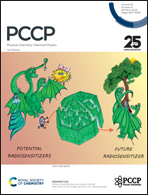Influence factors of CO adsorption on C2N-supported dual-atom catalysts unveiled by machine learning and twofold feature engineering†
Abstract
Dual-atom catalysts (DACs) have emerged as a compelling frontier in the realm of the electrochemical carbon dioxide reduction reaction (CO2RR). However, elucidating the intrinsic properties of dual-atom pairs and their direct correlation with catalytic activity poses significant challenges. Herein, we investigate CO adsorption on 248 kinds of C2N-supported DACs and analyze the underlying structure–activity relationships of dual transition metal (TM) atoms based on density functional theory (DFT) calculations and machine learning (ML) models. Compared to the direct input of atomic features in the decision tree model of ML, we confirm that extra feature engineering with the introduction of the arithmetic combination of atomic features can better reflect the correlation of dual TM atoms on C2N-based DACs. Further feature importance analysis reveals a strong relationship between the last one occupied orbital radius (rv), group number (G) for dual TM atoms and the CO binding strength, as well as a potential connection with the d band centre (εd). Our work provides deeper insights into the design of DACs and highlights the significance of twofold feature engineering for the synergistic effects between dual TM atoms.



 Please wait while we load your content...
Please wait while we load your content...